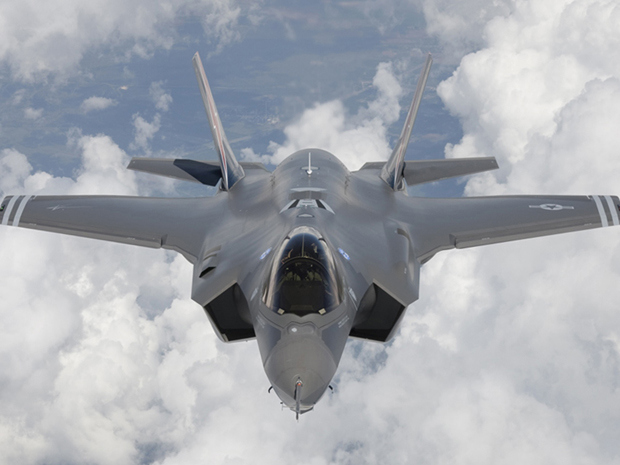
Prime Minister Stephen Harper is being urged by a noted Canadian political scientist, Michael Byers of the University of British Columbia, to make public a two-year-old government-commissioned report on possible alternatives to the Lockheed Martin F-35 as a replacement for the Boeing F-18 Hornets flown by the Royal Canadian Air Force.
Byers, who holds the federally-funded Canada Research Chair in International Law and Politics as well as his UBC professorship, released a report of his own April 29 in which he warned that the lifecycle costs of the F-35 Joint Strike Fighter could leave nothing in federal coffers for other Department of National Defence programs such as new fixed-wing search and rescue aircraft.
Having used DND’s own 2013 information in preparing his analysis, The Plane that Ate the Canadian Military – which was sponsored by two Ottawa-based think-tanks, the Rideau Institute and the Canadian Centre for Policy Alternatives — Byers said the government’s approach is fatally flawed in that its operating costs for the F-35 are based on those of the F-18s while his analysis incorporated US Department of Defence data.
“The difference between the Harper government’s number and the actual numbers . . . amounts to a difference of $11 billion,” he told a news conference on Parliament Hill. “F-35s have a much higher operating costs than CF-18s for a host of reasons.” Those included “a lot more uncertain developmental technology in F-35s as compared to the CF-18s — and the US Air Force and Lockheed Martin and the US government are discovering that there is a substantial price difference.”
He also said the US data point to a lifecycle cost of $56 billion for Canada and that other costs not factored into government forecasts so far included $420 million to modify in-flight refueling hardware, $218 million for munitions, $217 million for a computer programming facility, and $200 million to add drag chutes. “Once you add those other actual costs . . . you get to $57 billion.”
Other “uncertainties” included the prospect of even a small shift in the Canada-US currency exchange rates. An 85-cent dollar would add $800 million to the capital of the F-35s, he said, and a 2 per cent increase in inflation would add $1 billion. Yet another potential risk to consider was the possibility that F-35 orders would not be as high as Lockheed Martin projects, driving up unit costs.
“Add all this up and under a moderate risk scenario . . . you go up to $90 billion for the lifecycle cost of a fleet of F-35s. Change the risk parameters just slightly, go to a 4% increase in inflation and . . . you go to $126 billion!”
Lockheed Martin did not immediately respond to a request for comment, but Byers told InfoAéroQuébec that instead of rushing into an acquisition of the F-35, Canada should emulate Australia’s example by ordering F/A-18 Super Hornets from Boeing to “bridge” the impending gap in fighter capability when the CF-18s are retired at the end of this decade.
Byers said that the F-35’s primary mission of stealthily delivering “that first wave of shock and awe” against enemy targets had compromised its speed, range and general capabilities. “I do question whether the F-35, even if it worked, even if it was affordable, would be the best plane for Canada.”
Diplômé universitaire en histoire, journalisme et relations publiques, en 1993, Philippe Cauchi amorce une carrière de journalisme, analyste et consultant en aérospatiale. En 2013, il fonde avec Daniel Bordeleau, le site d’information aérospatial Info Aéro Québec.
Commentaires